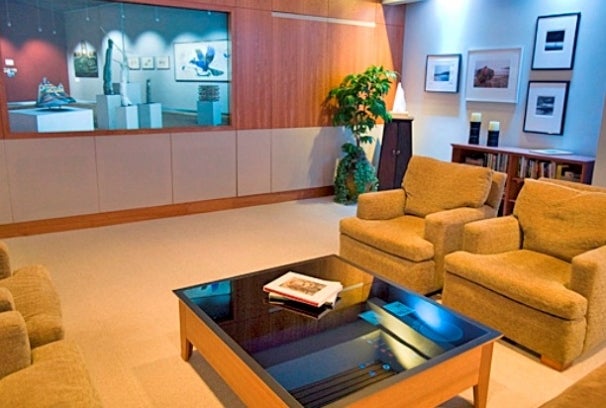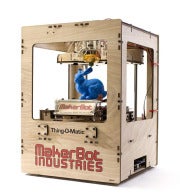All of the technology products we use today—from touchscreens to tablets to social networks—were once the “next big thing in tech.” Experts predicted that each of these things would become a part of everyone’s tech life, before most of us had even heard of them.
No prediction of the future is perfect (not even if you’re Tom Cruise in Minority Report), but that isn’t going to stop us from making our predictions for the next big thing in tech.Of course, experts also predicted that Apple would go out of business before 1998.
Smartphones Will Replace Desktops

John Herlihy, Google’s VP of online sales, believes that the desktop has about three years before phones replace it. And he first made that prediction a year ago.
Previously, only businesspeople with BlackBerrys used phones for everything, including simple tasks such as email. Now, according to a new Nielsen smartphone report, 43 percent of mobile phone users have smartphones. People use phones to do things that used to be reserved for desktop PCs, such as surf the Web, play games, and watch video.
Eventually, mobile devices will replace traditional computers completely. Morgan Stanley analyst Mary Meeker thinks that smartphone sales will surpass computer sales as early as next year.
Nanotech Batteries

Battery technology announced in September by the National University of Singapore reportedly will hold 20 times the charge of a traditional lithium ion battery and be ten times cheaper. This battery will use a flexible organic material held between two plates of graphite.
Such a battery-tech revolution could finally resolve one big complaint about mobile devices: that the battery life stinks. Even when the problem doesn’t involve software glitches—as in Apple’s recent iOS 5 battery-life issues—general battery life just isn’t all that great. The reason for this, as mycolleague Megan Geuss notes in her story “Why Your Smartphone Battery Sucks,” is that battery tech hasn’t advanced as quickly to hold a longer charge as smartphone tech has advanced to drain said charge. The last real breakthrough in battery technology was the lithium ion battery, which hit the market 15 years ago.
However, all of this may be set to change, thanks to advances in engineering on the molecular scale.
Augmented Reality
In October, Microsoft posted a vision of an augmented-reality future. What is augmented reality?
Imagine having reminders of your meetings for the day display on the lenses of your glasses when you walk into your office, or having the history of the Bay Bridge pop up as you walk past it. This is the promise of augmented reality, a technology that overlays information from the Web and other sources on the real world.
For now AR is mostly found in smartphone apps, as a convenient way to display info for users. But Microsoft’s future includes glass panes that act as networked displays and turn everything from glasses to taxi windows into screens for your online life.
Health Tech

For two years in a row now, the Wall Street Journal’s list of The Top 50 Venture-Backed Companies has named a healthcare startup as its top company. The WSJ list is an easy way to tell what investors believe the next big thing in tech is, and health care has made an impressive showing with eight different companies on the 2011 list.
Everybody knows that it’s hard to keep track of your complete health profile, from diet to exercise to medical history. Even small things, such as keeping a food diary, can be a lot of work. Thankfully, we’re getting an influx of products that can help; among them is Jawbone’s Up, which automatically tracks how many calories you burn in a day using a built-in pedometer, and lets you monitor how many calories you eat with a smartphone app in which you can record your diet with photos.
Gadgets such as the Up and the Fitbit (another health monitor with similar functionality) will help you keep on top of your health stats. And as the tools get easier and cheaper (the Up is $99), more and more people will give them a try.
Flexible OLED Screens
The past few years have seen the rise of the touchscreen, but we’re still left with the same boxy cell phones—just without the need for a keyboard. However, Samsung plans to release a phone with aflexible OLED screen in 2012.

With a flexible OLED screen, your phone will be able to roll up whenever you don’t need it. That means you could have a 7-inch screen when you want it, but turn it into an object with the size and weight of a pen when you aren’t using it. Flexible OLED technology has been around R&D labs for the past few years, but we’re finally starting to see commercial applications. With any luck, we’re not far from having this technology on shelves.
Living-Room Tech
Watching TV has been the same old thing for decades, but that may be about to change. Thanks to a new set of technologies, including Microsoft’s Kinect for Xbox, your living room is transforming from a one-stop TV shop into a multifunction entertainment center.

TVs are already connected, with built-in content channels such as Hulu Plus and Netflix. But we haven’t seen anything yet: Big tech players, such as Microsoft, Sony, and Apple, want to dominate your living room. Microsoft and Sony have been competing for years to get their respective gaming consoles under your TV, and those consoles are increasingly tailored for more than just games. Apple has jumped into the fray with its Apple TV, which lets you stream the content from your iTunes library onto your TV set. Also, before his passing, Steve Jobs was reportedly working on a TV project that would “do for televisions what he did for computers, music players, and phones,” according to biographer Walter Isaacson.
Speech Recognition/Interface
Google engineering director David Burke thinks that the next few years will see an explosion of speech technology on our mobile phones and tablet devices.
Although Apple’s speech-recognition program, Siri, may be getting all the attention right now, it’s just the beginning. Speech-recognition technology has been around for decades, but thanks to breakthroughs such as statistical algorithms to help improve accuracy, and the ability to process these tasks in the cloud, even simple mobile phones should be able to handle the technology now.
Speech recognition is an obvious answer to the need for better input devices on touchscreen smartphones. (Let’s be honest, an on-screen keyboard just isn’t good enough.)
3D Printing

Sure, 3D printing still faces some technical challenges, and a 3D printer remains pretty costly (at $1200, the MakerBot is one of the cheapest 3D printers), but we’re only steps away from printing out a replacement carburetor or a new Rubik’s Cube.

People are already able to make complete, functional 3D-printed cars, as well as complex aircraft landing gear parts. Though most sub-$1500 printers can print only small objects in plastic, it’s only a matter of time before the capabilities of high-end 3D printers show up in our homes.


